
For no real, apparent reason, I chose “26-2”, which is itself Coltrane's "Descending Maj 3rds Cycle" adaptation of Charlie Parker's “Confirmation”
Rather than try to completely do my own thing with the melody, I chose to stick with 'Trane's original melodic rhythm and stay as true as possible to his original melodic shapes, adapting them to the change in direction of the Maj 3rds harmonic cycle.
On the left is the head of John Coltrane's original version of "26-2", which employs the "Cycle of Descending Maj 3rds". The audio example is from the original Atlantic recording from October 26, 1960 (hence the title), which, in addition to Coltrane on the tenor saxophone, included McCoy Tyner - piano, Steve Davis - bass and Elvin Jones - drums..
On the right is my own experimental adaptation, titled "226 Retrosteps", which utilizes the "Cycle of Ascending Maj 3rds". As previously mentioned, I tried to remain true to the melodic rhythm of 'Trane's original. The tempo I chose is a bit faster than the original - ca. 225 vs. 196 - which is due to my not checking the original beforehand. It turns out, though, not to really matter for demo purposes - plus it feels good at that tempo, for what it is.
There is, of course, no comparison to the bounce created by 'Trane & Co.'s live, in-studio version. That aside, let's take a look at the first 8 bars (A section) of each version of the Cycle of Maj 3rds:
It's the "diddle in the middle" that creates the difference, and that difference, as mentioned in the previous post, is the juxtaposition of the first two V7-Is of each cycle:
ex. Line #1: (F Ab7 | Db & E7 | A C7 | C-7 F7) of 26-2 are
swapped in 226 Retrosteps (F E7 | A & Ab7 | Db C7 | C-7 F7)
Similarly, Line #2 of each example starts on Bb Maj and completes only two-thirds of a full cycle before resolving to the secondary dominant (D-7 G7) in the 3rd bar, resolving to the ii-V7 (G-7 C7) back to F for the second A section. The Db7 in measure #6 of "226 Retrosteps" is the tritone sub of the following dominant (G7), and actually extends the secondary dominant function by anticipating it by 2 beats.
Second 4 bars of:“26-2”: | Bb Db7 | Gb A7 | D- G7 | G-7 C7 |
Second 4 bars of: “226 Retrosteps”: | Bb A7 | D Db7 | D- G7 | G-7 C7 |
I'm honestly a bit surprised at how similar, both versions of the cycle sound, when utilized in this manner. If I heard "226 Retrosteps" for the first time without knowing what it was, I'd probably say, "That's "26-2"..... I think?"
In any case, not to get too lost in the weeds, I've included the full C, Bb & Eb lead sheets, as well as the 4-note voicings plus bass, of "226 Retrosteps" as an addendum to the revised version of "Changin' Trane's / Retrosteps - The Ultimate Book of Coltrane Changes".
"Changin' Trane's / Retrosteps" (click for more examples)
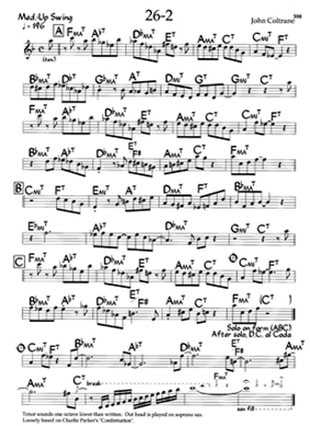
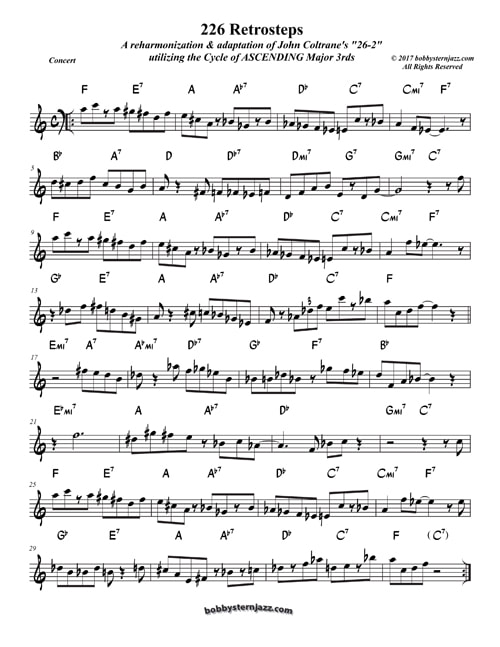




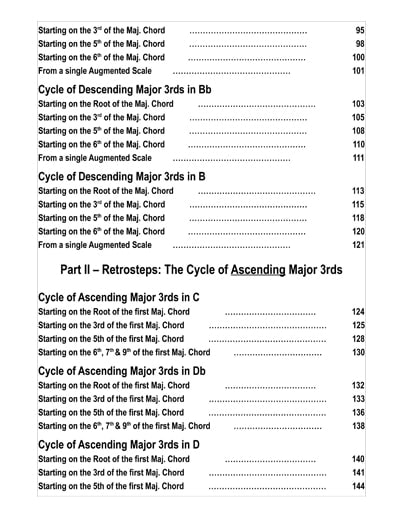
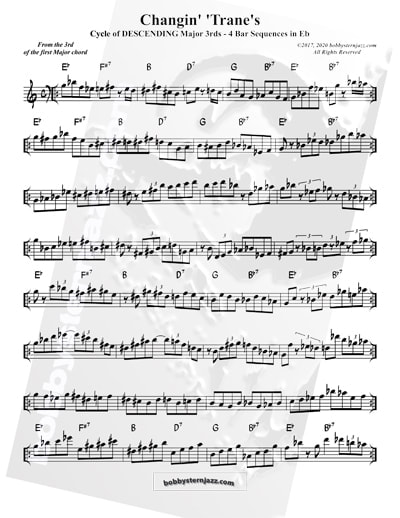
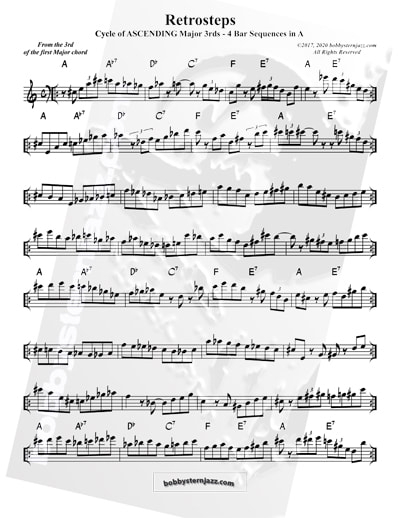
 RSS Feed
RSS Feed









